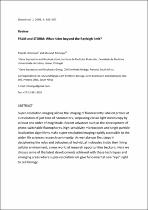JavaScript is disabled for your browser. Some features of this site may not work without it.
- ResearchSpace
- →
- Research Publications/Outputs
- →
- Journal Articles
- →
- View Item
| dc.contributor.author |
Henriques, R

|
|
| dc.contributor.author |
Mhlanga, Musa

|
|
| dc.date.accessioned | 2012-03-16T10:37:14Z | |
| dc.date.available | 2012-03-16T10:37:14Z | |
| dc.date.issued | 2009-06 | |
| dc.identifier.citation | Henriques, R and Mhlanga, MM. 2009. PALM and STORM: what hides beyond the Rayleigh limit? Biotechnology Journal, vol. 4(6), pp 846-857 | en_US |
| dc.identifier.issn | 1860-6768 | |
| dc.identifier.uri | http://www3.interscience.wiley.com/journal/122462281/abstract | |
| dc.identifier.uri | http://hdl.handle.net/10204/5654 | |
| dc.description | Copyright: 2009 Wiley. This is an ABSTRACT ONLY. | en_US |
| dc.description.abstract | Super-resolution imaging allows the imaging of fluorescently labeled probes at a resolution of just tens of nanometers, surpassing classic light microscopy by at least one order of magnitude. Recent advances such as the development of photo-switchable fluorophores, high-sensitivity microscopes and single particle localization algorithms make super-resolution imaging rapidly accessible to the wider life sciences research community. As we take our first steps in deciphering the roles and behaviors of individual molecules inside their living cellular environment, a new world of research opportunities beckons. Here we discuss some of the latest developments achieved with these techniques and emerging areas where super-resolution will give fundamental new “eye” sight to cell biology. | en_US |
| dc.language.iso | en | en_US |
| dc.publisher | Wiley-VCH Verlag Berlin | en_US |
| dc.relation.ispartofseries | Workflow;1898 | |
| dc.subject | Fluorescent proteins | en_US |
| dc.subject | Super-resolution | en_US |
| dc.subject | Rayleigh | en_US |
| dc.subject | Nanoscopy | en_US |
| dc.title | PALM and STORM: what hides beyond the Rayleigh limit? | en_US |
| dc.type | Article | en_US |
| dc.identifier.apacitation | Henriques, R., & Mhlanga, M. (2009). PALM and STORM: what hides beyond the Rayleigh limit?. http://hdl.handle.net/10204/5654 | en_ZA |
| dc.identifier.chicagocitation | Henriques, R, and Musa Mhlanga "PALM and STORM: what hides beyond the Rayleigh limit?." (2009) http://hdl.handle.net/10204/5654 | en_ZA |
| dc.identifier.vancouvercitation | Henriques R, Mhlanga M. PALM and STORM: what hides beyond the Rayleigh limit?. 2009; http://hdl.handle.net/10204/5654. | en_ZA |
| dc.identifier.ris | TY - Article AU - Henriques, R AU - Mhlanga, Musa AB - Super-resolution imaging allows the imaging of fluorescently labeled probes at a resolution of just tens of nanometers, surpassing classic light microscopy by at least one order of magnitude. Recent advances such as the development of photo-switchable fluorophores, high-sensitivity microscopes and single particle localization algorithms make super-resolution imaging rapidly accessible to the wider life sciences research community. As we take our first steps in deciphering the roles and behaviors of individual molecules inside their living cellular environment, a new world of research opportunities beckons. Here we discuss some of the latest developments achieved with these techniques and emerging areas where super-resolution will give fundamental new “eye” sight to cell biology. DA - 2009-06 DB - ResearchSpace DP - CSIR KW - Fluorescent proteins KW - Super-resolution KW - Rayleigh KW - Nanoscopy LK - https://researchspace.csir.co.za PY - 2009 SM - 1860-6768 T1 - PALM and STORM: what hides beyond the Rayleigh limit? TI - PALM and STORM: what hides beyond the Rayleigh limit? UR - http://hdl.handle.net/10204/5654 ER - | en_ZA |






